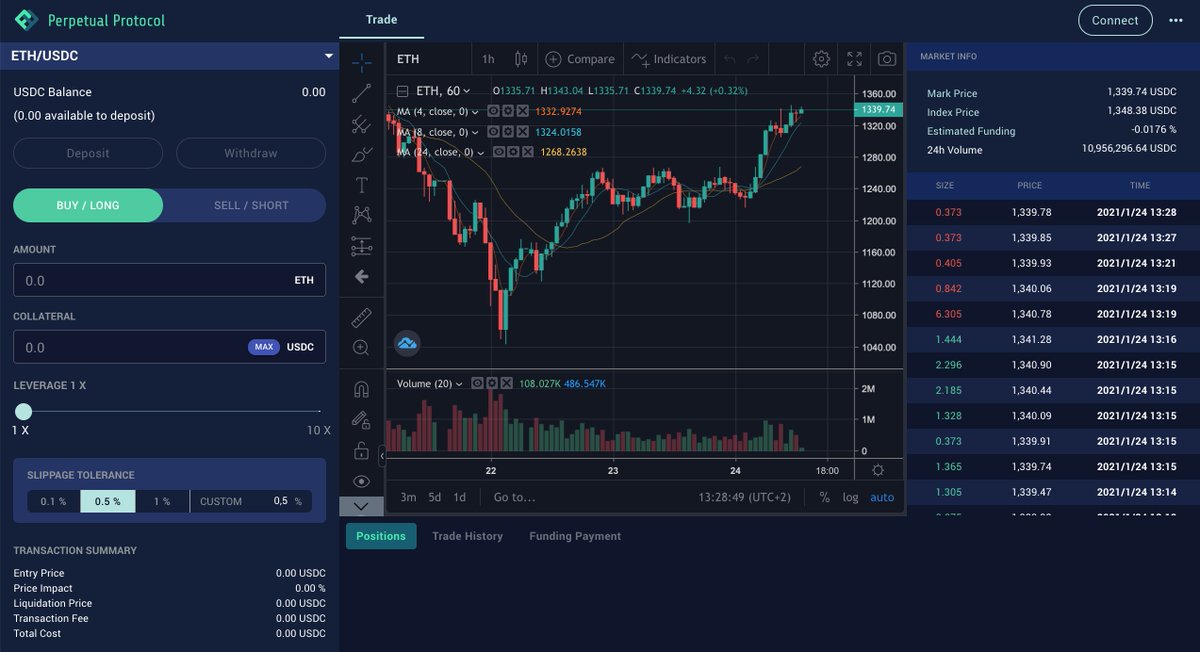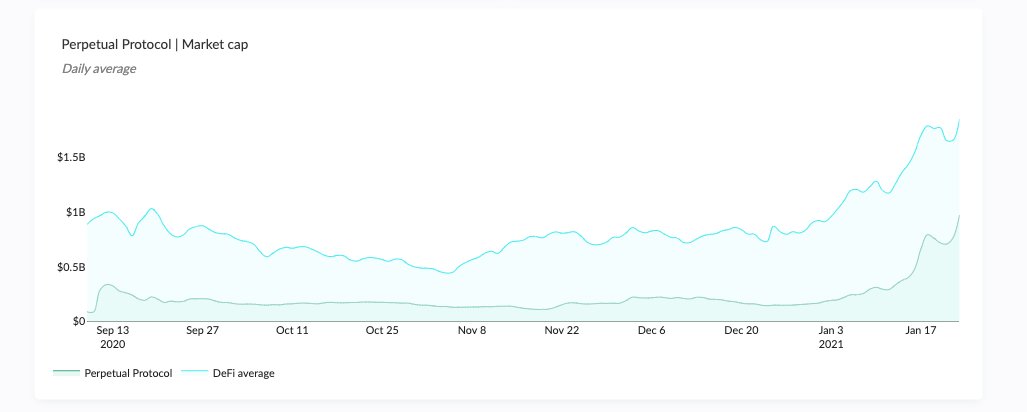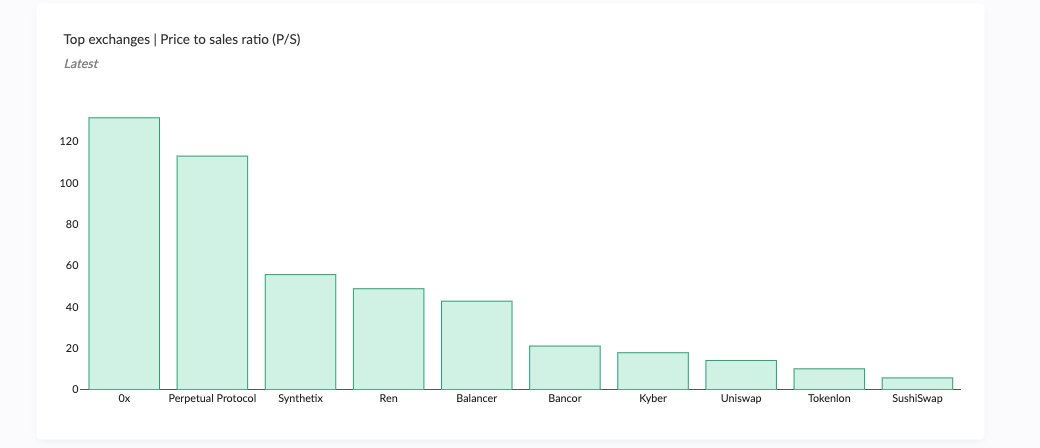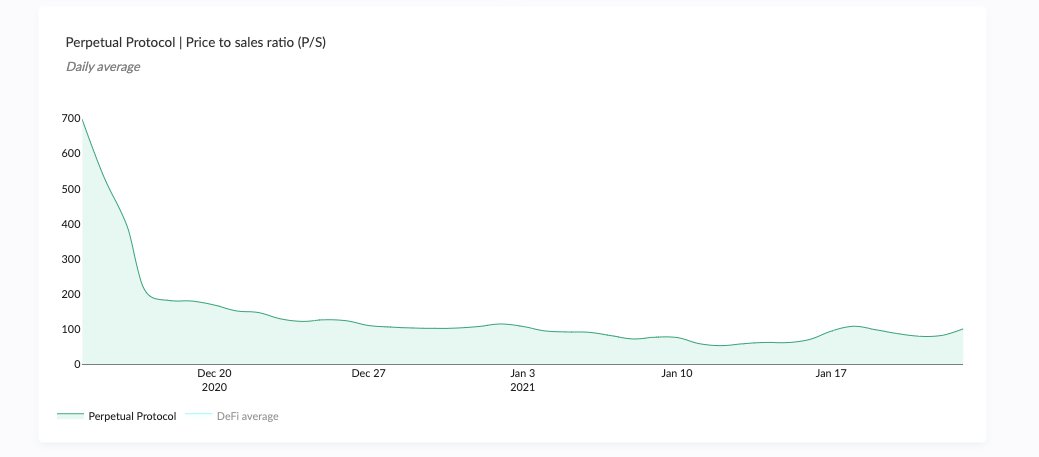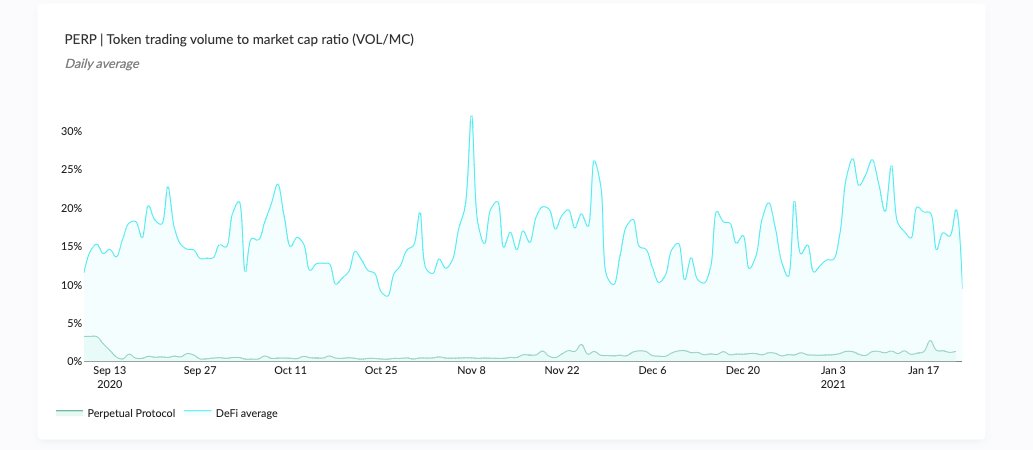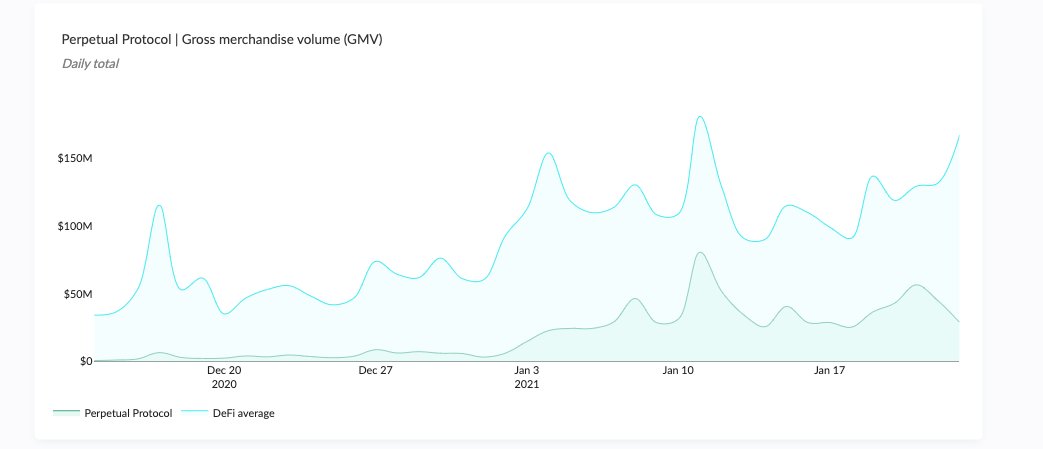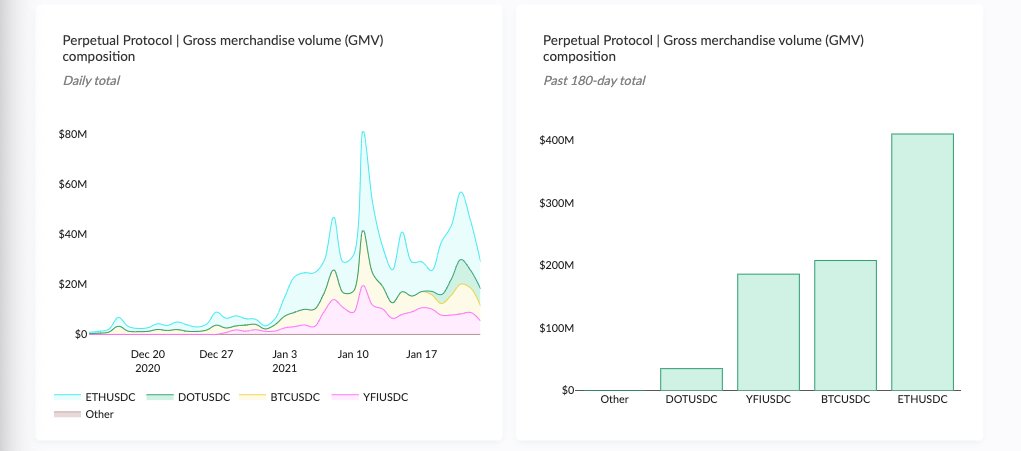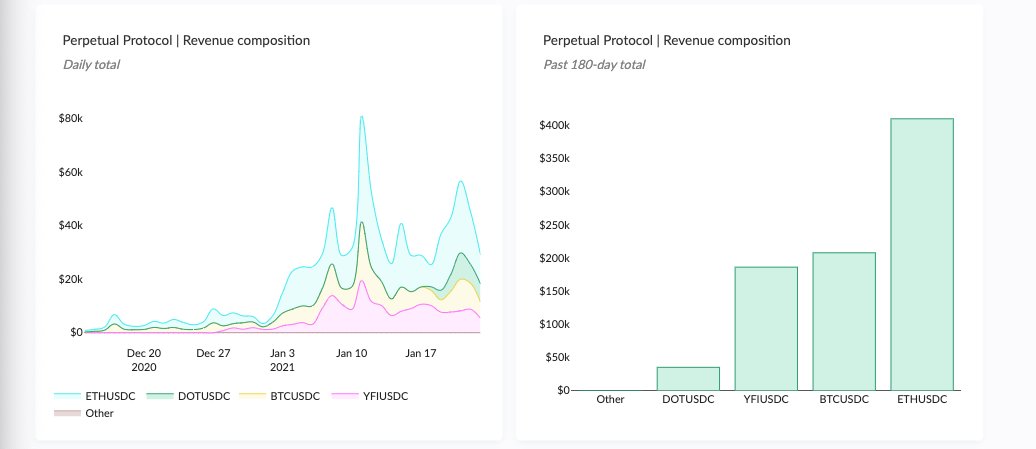2/ Protocol purpose
Perpetual Protocol enables users to go leveraged long or short on any asset, only by interacting with one asset (the collateral asset).
Perpetual Protocol enables users to go leveraged long or short on any asset, only by interacting with one asset (the collateral asset).
3/ Problem
Perpetual contracts (or “perps”) are already a highly sought-after retail product, but most of the perpetual trading volume is currently concentrated on centralized exchanges.
Perpetual contracts (or “perps”) are already a highly sought-after retail product, but most of the perpetual trading volume is currently concentrated on centralized exchanges.
4/ Solution
Perpetual Protocol enables users to create synthetic leveraged long or short positions (against USDC collateral) on any asset that is supported by the protocol.
Perpetual Protocol enables users to create synthetic leveraged long or short positions (against USDC collateral) on any asset that is supported by the protocol.
5/ Solution (cont.)
In order to support an asset, the protocol needs to have access to the underlying asset’s price to correctly determine the size of the recurring funding payments.
In order to support an asset, the protocol needs to have access to the underlying asset’s price to correctly determine the size of the recurring funding payments.
6/ Solution (cont.)
Because the perpetual contracts don’t have an explicit expiration date (compared to e.g. futures), they use funding payments to keep the perpetual contract’s price in line with the underlying asset’s price.
Because the perpetual contracts don’t have an explicit expiration date (compared to e.g. futures), they use funding payments to keep the perpetual contract’s price in line with the underlying asset’s price.
7/ Solution (cont.)
Funding payments work as a price controller mechanism:
1. Perpetual's price > underlying’s price
→ price needs to go down → longs pay shorts
2. Perpetual's price < underlying’s price
→ price needs to go up → shorts pay longs
Funding payments work as a price controller mechanism:
1. Perpetual's price > underlying’s price
→ price needs to go down → longs pay shorts
2. Perpetual's price < underlying’s price
→ price needs to go up → shorts pay longs
8/ Why now
As DeFi continues to grow, we're likely to see successful CEX products be recreated to fit the decentralized world.
The trading volumes for perps on centralized exchanges are multiples higher than spot volumes on those same exchanges.
As DeFi continues to grow, we're likely to see successful CEX products be recreated to fit the decentralized world.
The trading volumes for perps on centralized exchanges are multiples higher than spot volumes on those same exchanges.
9/ Why now (cont.)
Further, the growing interest towards non-Ethereum assets makes perps an attractive way for traders to easily gain exposure to assets that aren’t otherwise accessible on Ethereum today, e.g. Polkadot’s DOT.
Further, the growing interest towards non-Ethereum assets makes perps an attractive way for traders to easily gain exposure to assets that aren’t otherwise accessible on Ethereum today, e.g. Polkadot’s DOT.
10/ Competition
In addition to CEXs, Perpetual Protocol is competing against order book-based perps protocols like dYdX, DerivaDEX, MCDEX.
The difference between Perpetual Protocol and its competitors is the use of a virtual AMM to price trades and bootstrap liquidity.
In addition to CEXs, Perpetual Protocol is competing against order book-based perps protocols like dYdX, DerivaDEX, MCDEX.
The difference between Perpetual Protocol and its competitors is the use of a virtual AMM to price trades and bootstrap liquidity.
11/ Competition (cont.)
When a new asset is added to the protocol, a virtual AMM is created to enable trading with it.
Unlike in Uniswap, where LPs deposit real assets into a trading pool, in Perpetual Protocol the initial asset balances are virtual, set by the pool creator.
When a new asset is added to the protocol, a virtual AMM is created to enable trading with it.
Unlike in Uniswap, where LPs deposit real assets into a trading pool, in Perpetual Protocol the initial asset balances are virtual, set by the pool creator.
12/ Competition (cont.)
When a user purchases a perpetual contract, the price of the asset is determined like it was traded on an AMM like Uniswap -- this, even if there are no “real” assets in the pool.
All trades are simply accounted against the user’s collateral balance.
When a user purchases a perpetual contract, the price of the asset is determined like it was traded on an AMM like Uniswap -- this, even if there are no “real” assets in the pool.
All trades are simply accounted against the user’s collateral balance.
13/ Product
The exchange works on the xDai Chain, an Ethereum sidechain.
For more on different Ethereum scaling solutions, check out our post below. https://tokenterminal.substack.com/p/a-primer-on-ethereum-l2-scaling-techniques-17ac437891b1
The exchange works on the xDai Chain, an Ethereum sidechain.
For more on different Ethereum scaling solutions, check out our post below. https://tokenterminal.substack.com/p/a-primer-on-ethereum-l2-scaling-techniques-17ac437891b1
14/ Product (cont.)
To start trading, users need to deposit USDC from Ethereum to the Perpetual Protocol exchange located on the sidechain.
The USDC can then be used as collateral to buy synthetic assets (perpetual contracts).
To start trading, users need to deposit USDC from Ethereum to the Perpetual Protocol exchange located on the sidechain.
The USDC can then be used as collateral to buy synthetic assets (perpetual contracts).
15/ Business model
The protocol charges a 0.1% trading fee (take rate) on each trade executed on the vAMM.
Currently, the trading fees are directed to a separate insurance fund. Over time, 50% of the trading fees will be distributed to PERP tokenholders.
The protocol charges a 0.1% trading fee (take rate) on each trade executed on the vAMM.
Currently, the trading fees are directed to a separate insurance fund. Over time, 50% of the trading fees will be distributed to PERP tokenholders.
16/ Market cap
- Latest: $1,059,000,000
- 30-day change: +95.61%
It’s worth noting that the PERP token was released already in September, even if the exchange itself launched in December.
PERP’s market cap seems to have correlated with the recent run-up of other DeFi tokens.
- Latest: $1,059,000,000
- 30-day change: +95.61%
It’s worth noting that the PERP token was released already in September, even if the exchange itself launched in December.
PERP’s market cap seems to have correlated with the recent run-up of other DeFi tokens.
17/ Price to sales ratio (P/S)
- Latest: 111.50x
- 30-day change: -64.49%
Having launched only a little over a month ago, the protocol has attracted significant volume to its exchange, which is also evident in its decreasing price-to-sales ratio.
https://terminal.tokenterminal.com/dashboard/Exchange
- Latest: 111.50x
- 30-day change: -64.49%
Having launched only a little over a month ago, the protocol has attracted significant volume to its exchange, which is also evident in its decreasing price-to-sales ratio.
https://terminal.tokenterminal.com/dashboard/Exchange
18/ Price to sales ratio (P/S) (cont.)
The steep fall in the price to sales ratio (along with the stable market cap in December and early January) shows that the trading volumes on Perpetual Protocol took off almost immediately after launch.
https://terminal.tokenterminal.com/dashboard/PerpetualProtocol
The steep fall in the price to sales ratio (along with the stable market cap in December and early January) shows that the trading volumes on Perpetual Protocol took off almost immediately after launch.
https://terminal.tokenterminal.com/dashboard/PerpetualProtocol
19/ Token trading volume to market cap ratio (VOL/MC)
- Latest: 1.36%
- 30-day change: +12.78%
The relatively low VOL/MC ratio is natural for an early-stage project that has a relatively low supply of circulating tokens.
https://terminal.tokenterminal.com/dashboard/PerpetualProtocol
- Latest: 1.36%
- 30-day change: +12.78%
The relatively low VOL/MC ratio is natural for an early-stage project that has a relatively low supply of circulating tokens.
https://terminal.tokenterminal.com/dashboard/PerpetualProtocol
20/ Gross merchandise volume (GMV)
- Total since launch: $839,647,077
- 30-day change: +755.58%
The trading volumes have been increasing exponentially over the last few weeks.
The low trading fees on the sidechain offer a compelling alternative for traders.
- Total since launch: $839,647,077
- 30-day change: +755.58%
The trading volumes have been increasing exponentially over the last few weeks.
The low trading fees on the sidechain offer a compelling alternative for traders.
21/ GMV (cont.)
The protocol currently supports perpetuals for ETH, BTC, YFI, and DOT.
It’s interesting to see how quickly the trading volumes for BTC, DOT, and other non-Ethereum assets will grow in the future.
https://terminal.tokenterminal.com/dashboard/PerpetualProtocol
The protocol currently supports perpetuals for ETH, BTC, YFI, and DOT.
It’s interesting to see how quickly the trading volumes for BTC, DOT, and other non-Ethereum assets will grow in the future.
https://terminal.tokenterminal.com/dashboard/PerpetualProtocol
22/ Revenue (fees paid)
- Total since launch: $838,541
- 30-day change: +755.51%
Given the fixed 0.1% trading fee, we can see that the revenue pattern for Perpetual Protocol is proportional to the trading volume pattern.
https://terminal.tokenterminal.com/dashboard/PerpetualProtocol
- Total since launch: $838,541
- 30-day change: +755.51%
Given the fixed 0.1% trading fee, we can see that the revenue pattern for Perpetual Protocol is proportional to the trading volume pattern.
https://terminal.tokenterminal.com/dashboard/PerpetualProtocol
23/ Revenue (fees paid) (cont.)
The protocol currently supports perpetuals for ETH, BTC, YFI, and DOT. It’s interesting to see how quickly the trading fees paid for BTC, DOT, and other non-Ethereum assets will grow in the future.
The protocol currently supports perpetuals for ETH, BTC, YFI, and DOT. It’s interesting to see how quickly the trading fees paid for BTC, DOT, and other non-Ethereum assets will grow in the future.
24/ Check out our docs to learn more about the metrics we use at Token Terminal: https://docs.tokenterminal.com/
fin/ Check out our newsletter for more recurring insights: https://tokenterminal.substack.com/p/the-rise-of-perpetual-protocol

 Read on Twitter
Read on Twitter
